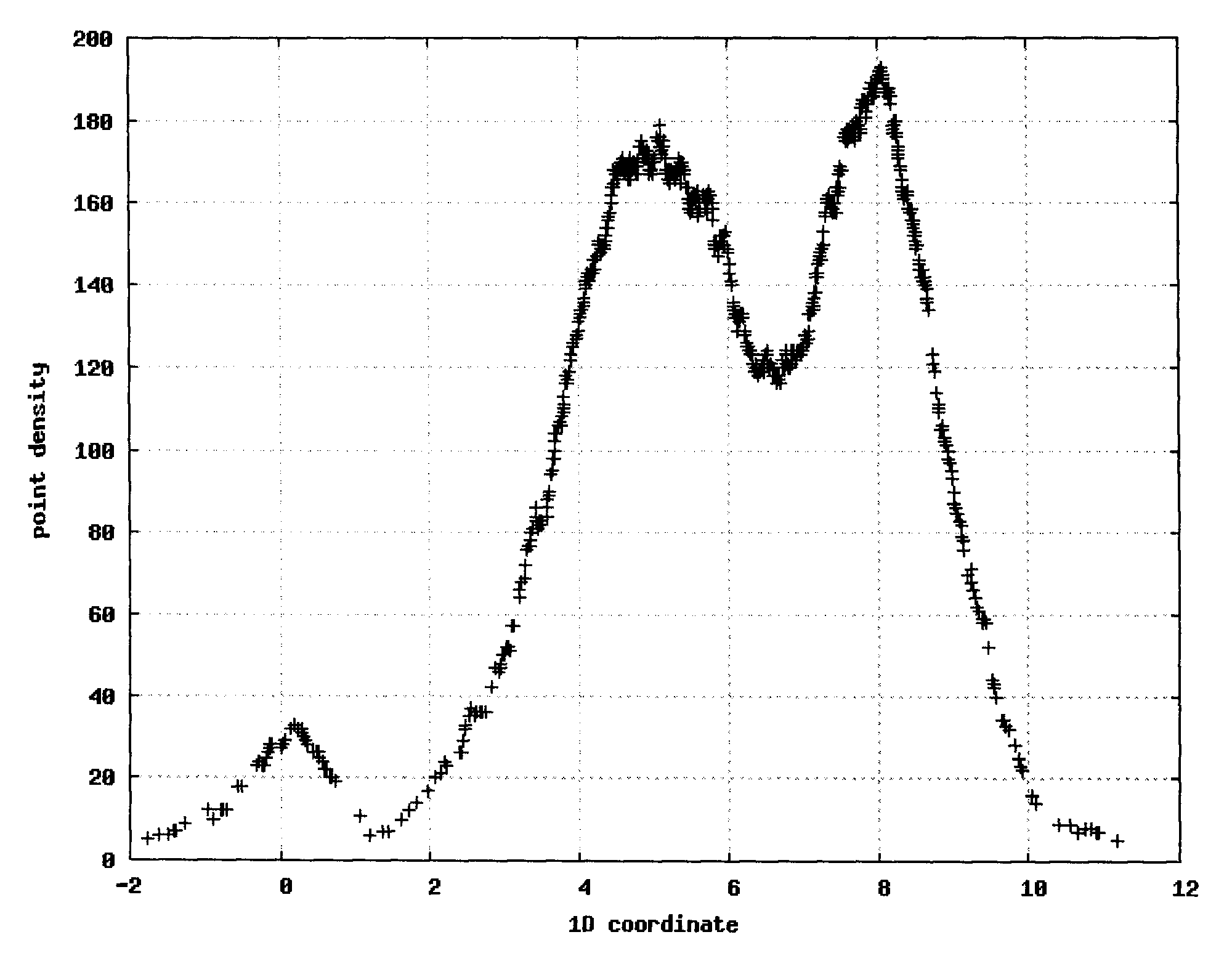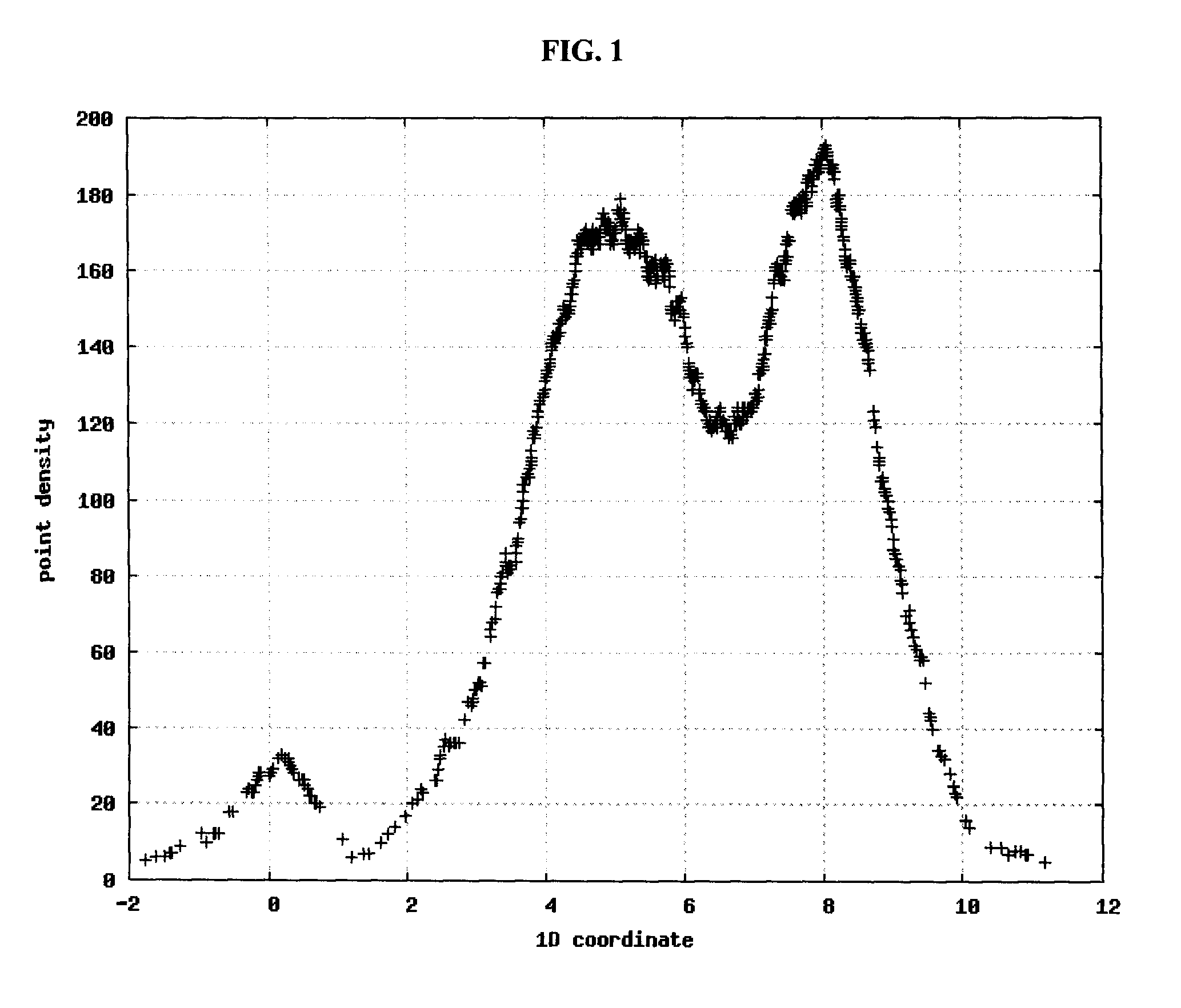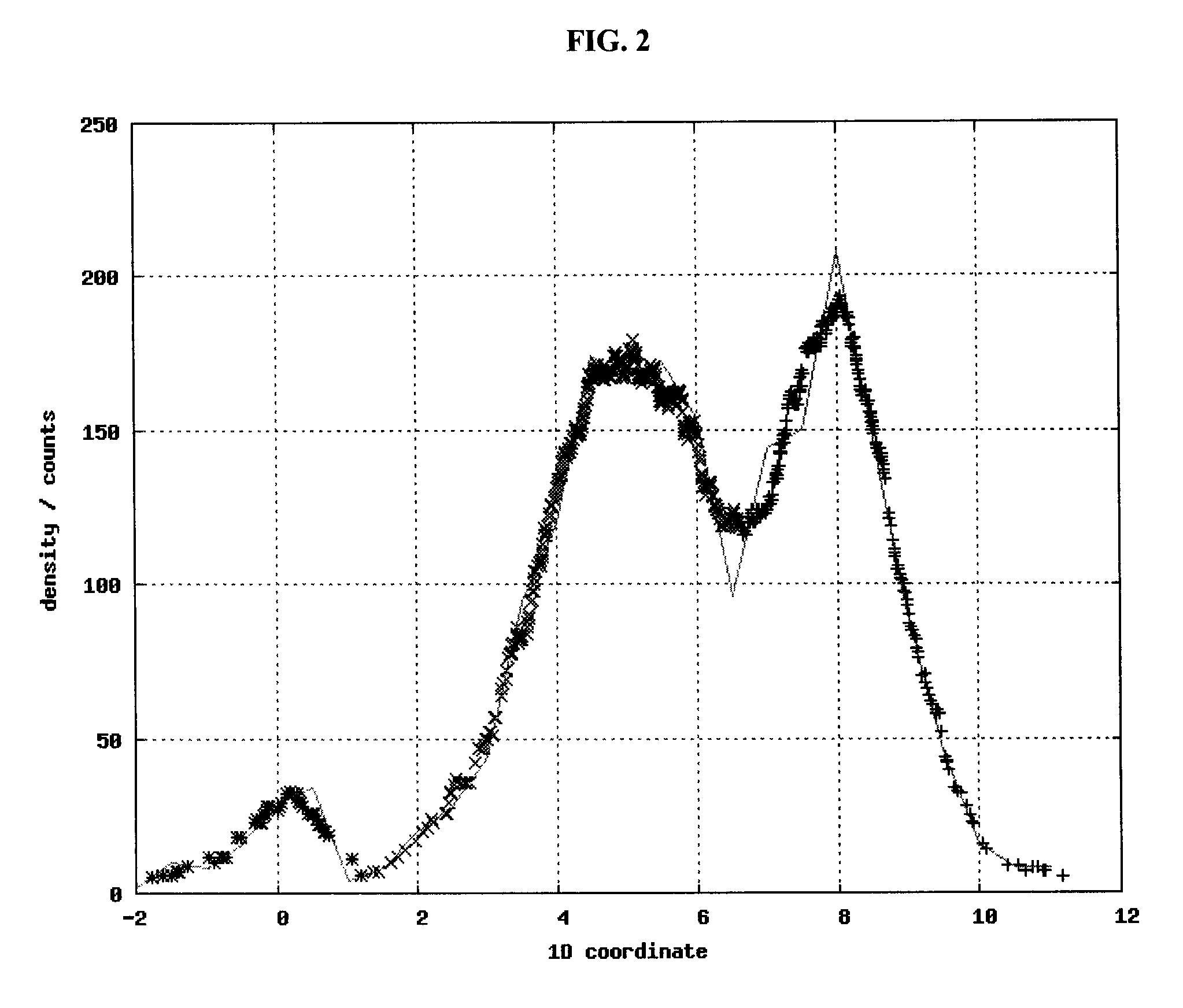Density based clustering for multidimensional data
- Summary
- Abstract
- Description
- Claims
- Application Information
AI Technical Summary
Benefits of technology
Problems solved by technology
Method used
Image
Examples
example 1
Demonstration of the Method on a Simple Data Set
[0064]A one-dimensional data set that was generated by taking points at random from three superimposed Gaussian distributions is shown in FIG. 1. With a cutoff radius of 0.5, the correct clusters were recovered as confirmed by visual inspection in FIG. 2.
example 2
Identifying the Different States of a Protein
[0065]A Ramachandran plot distribution of phi / psi angles generated from a many nanosecond long computer simulation of trialanine is shown in FIG. 3. Applying the method of the invention to this two dimensional dataset yields the clustering result shown in FIG. 4 when using a preset cutoff of 15. A side view of the density of points vs. phi / psi angles (shaded by cluster) is shown in FIG. 5 and provides an illustration of the how the method of the invention may be applied.
example 3
Identifying Different Conformations of a Protein at the Amino Acid Level
[0066]The clustering results for the conformations of a single histidine molecule as observed in a 1 nanosecond trajectory is shown in FIG. 6. Simulation snapshots were aligned based on the protein backbone atoms (C, Cα, N) and clustered based on side chain heavy atom coordinates (x, y, z coordinates for each of 6 atoms—an 18-dimensional data set). The cutoff was set at 2. Two heavily populated clusters are clearly distinguished using the method of the invention.
PUM
 Login to View More
Login to View More Abstract
Description
Claims
Application Information
 Login to View More
Login to View More - R&D
- Intellectual Property
- Life Sciences
- Materials
- Tech Scout
- Unparalleled Data Quality
- Higher Quality Content
- 60% Fewer Hallucinations
Browse by: Latest US Patents, China's latest patents, Technical Efficacy Thesaurus, Application Domain, Technology Topic, Popular Technical Reports.
© 2025 PatSnap. All rights reserved.Legal|Privacy policy|Modern Slavery Act Transparency Statement|Sitemap|About US| Contact US: help@patsnap.com



